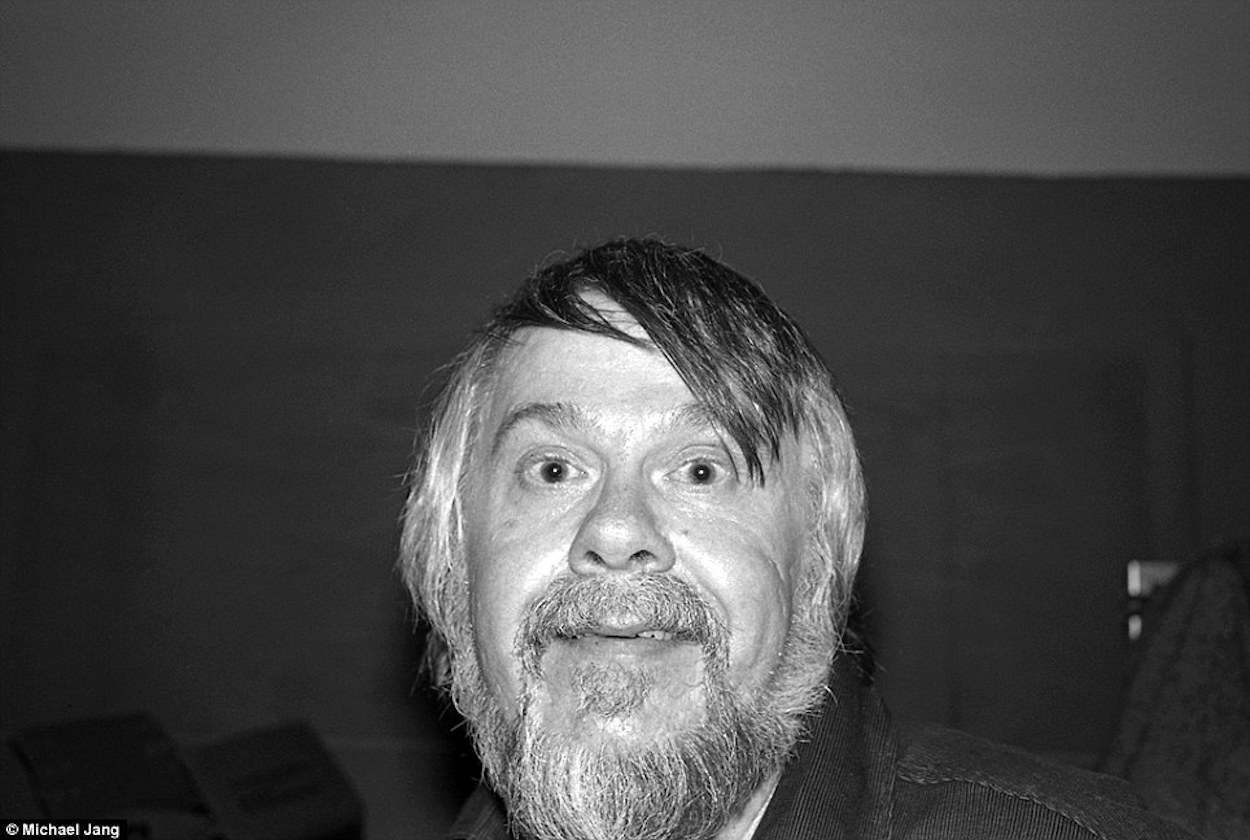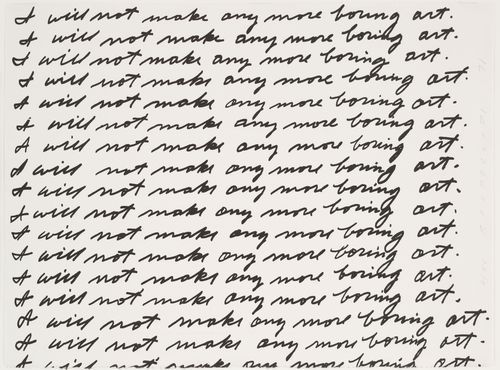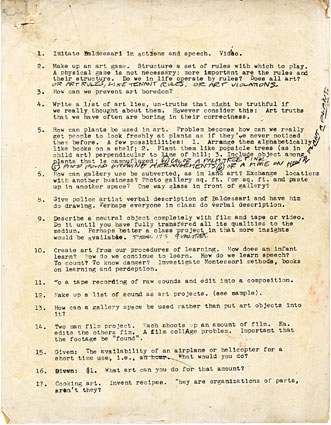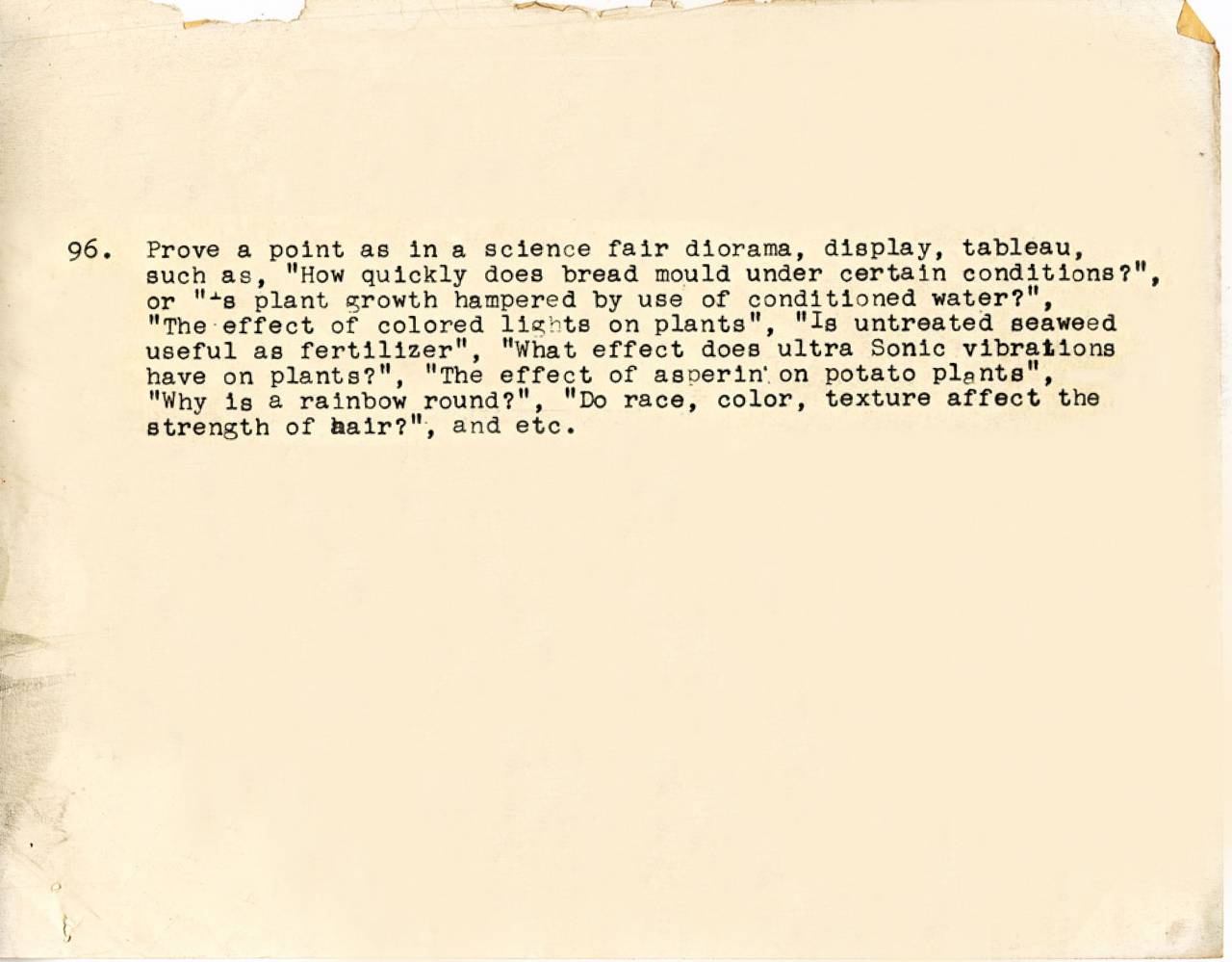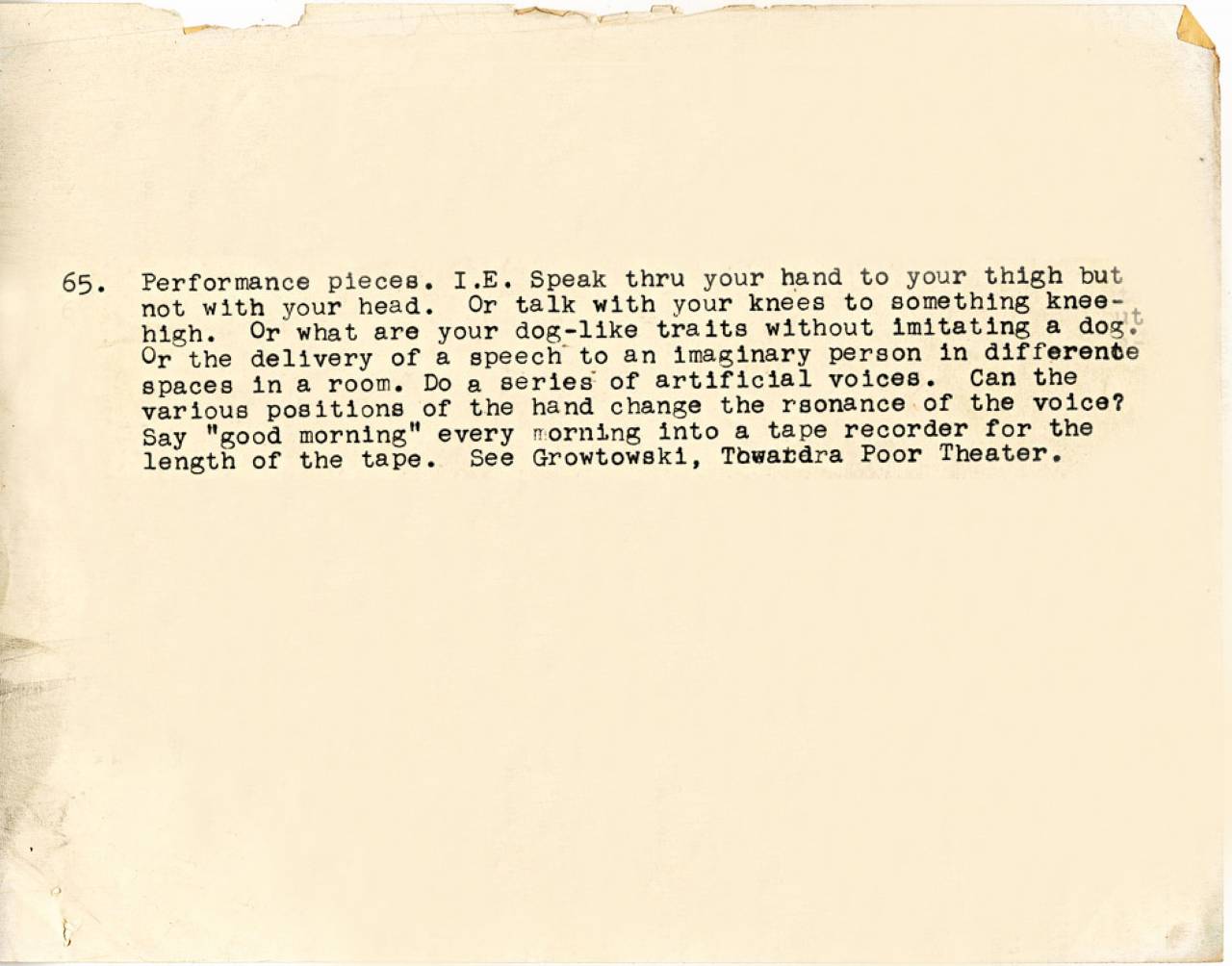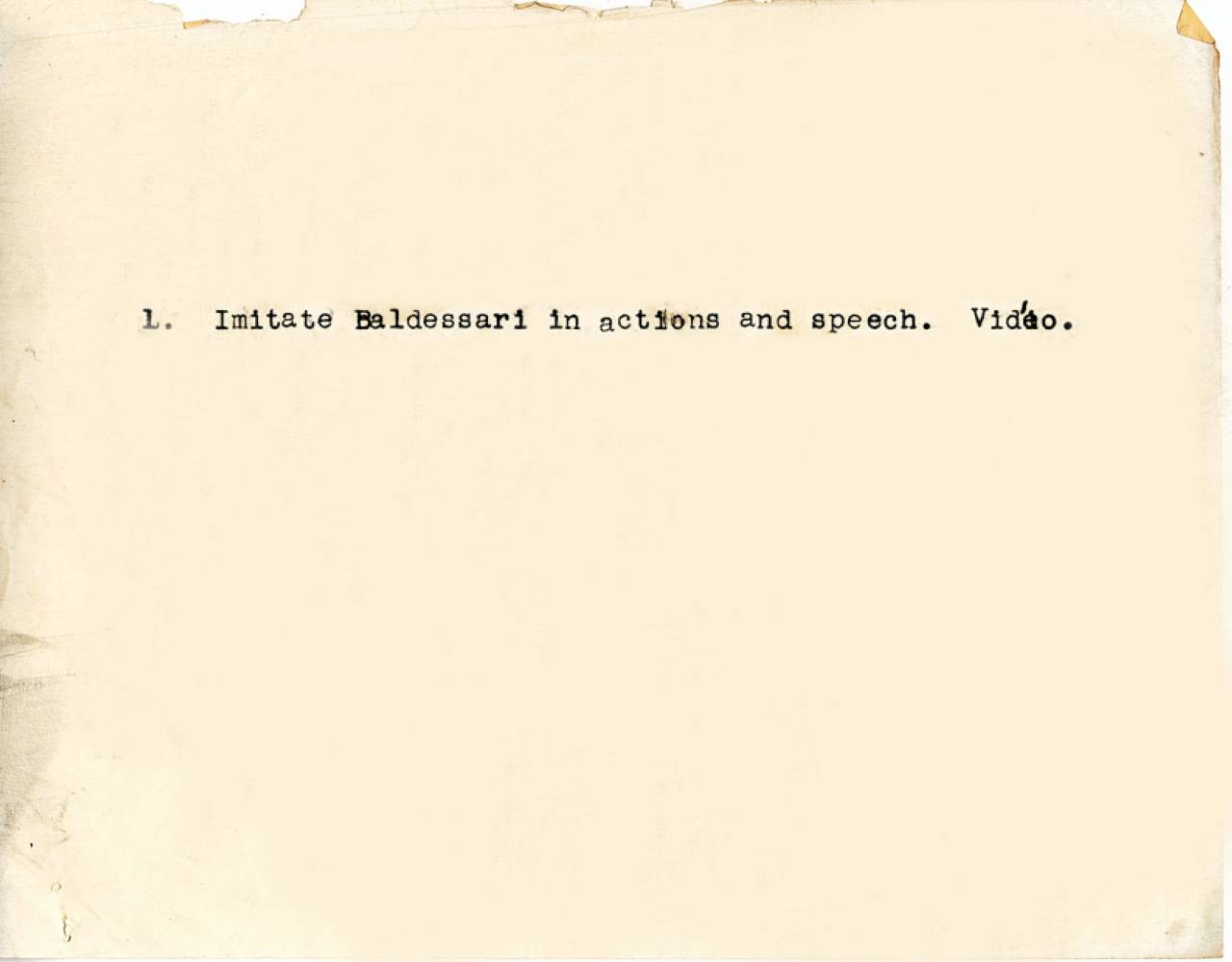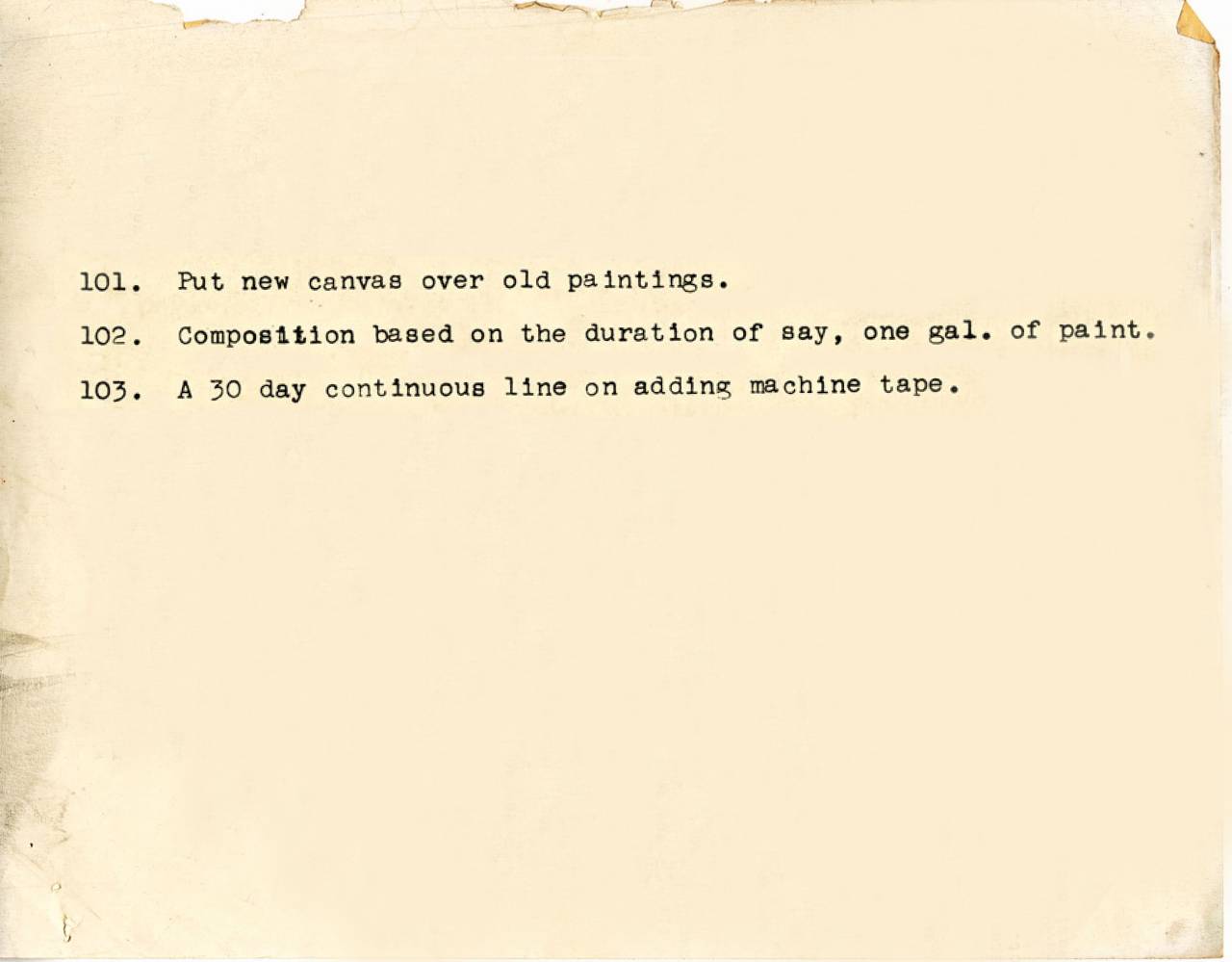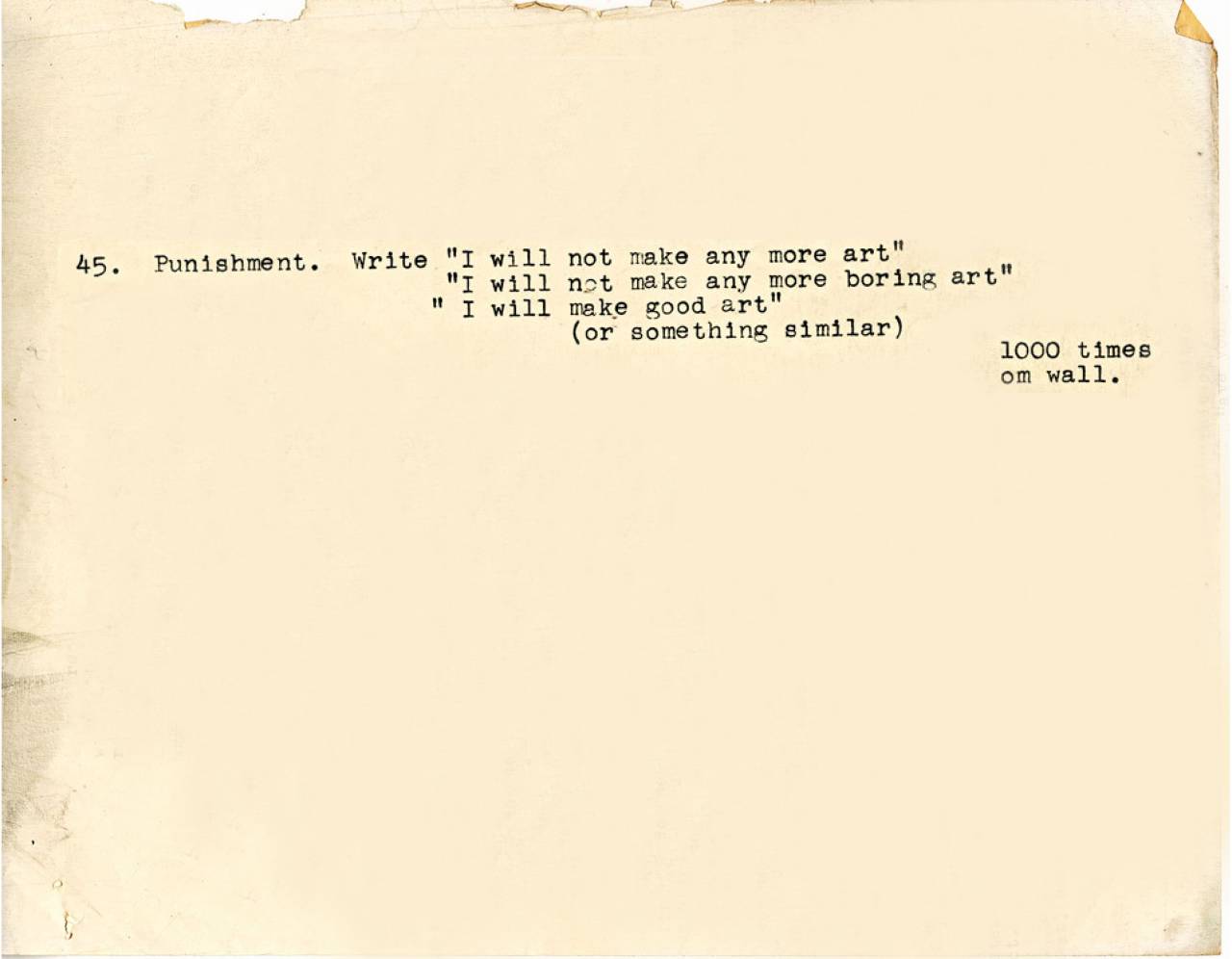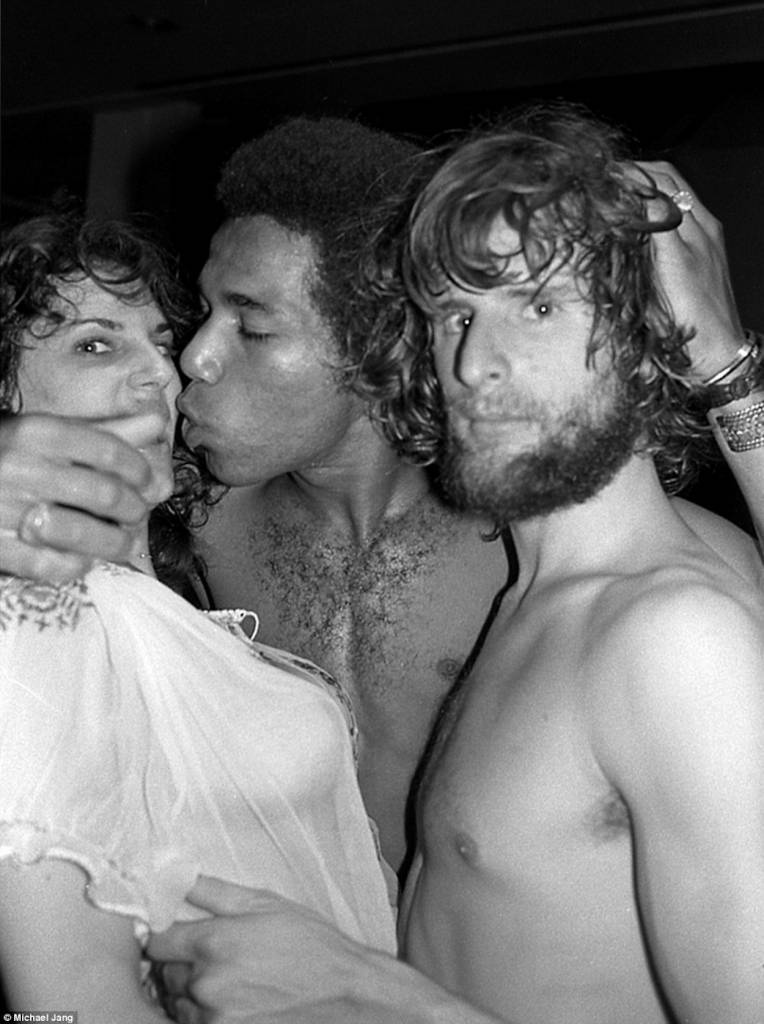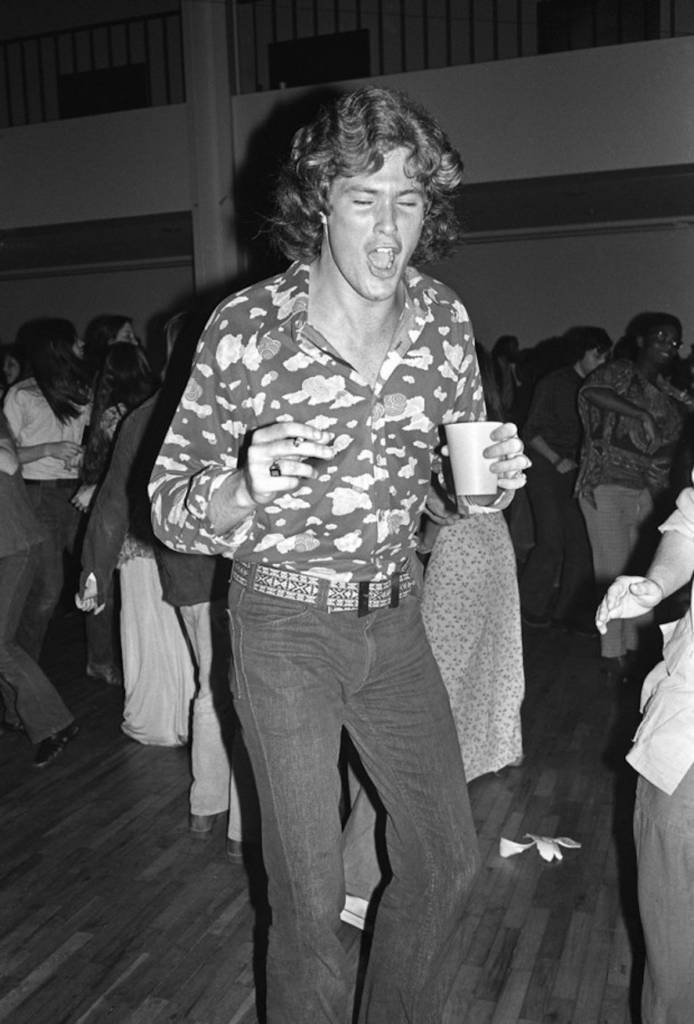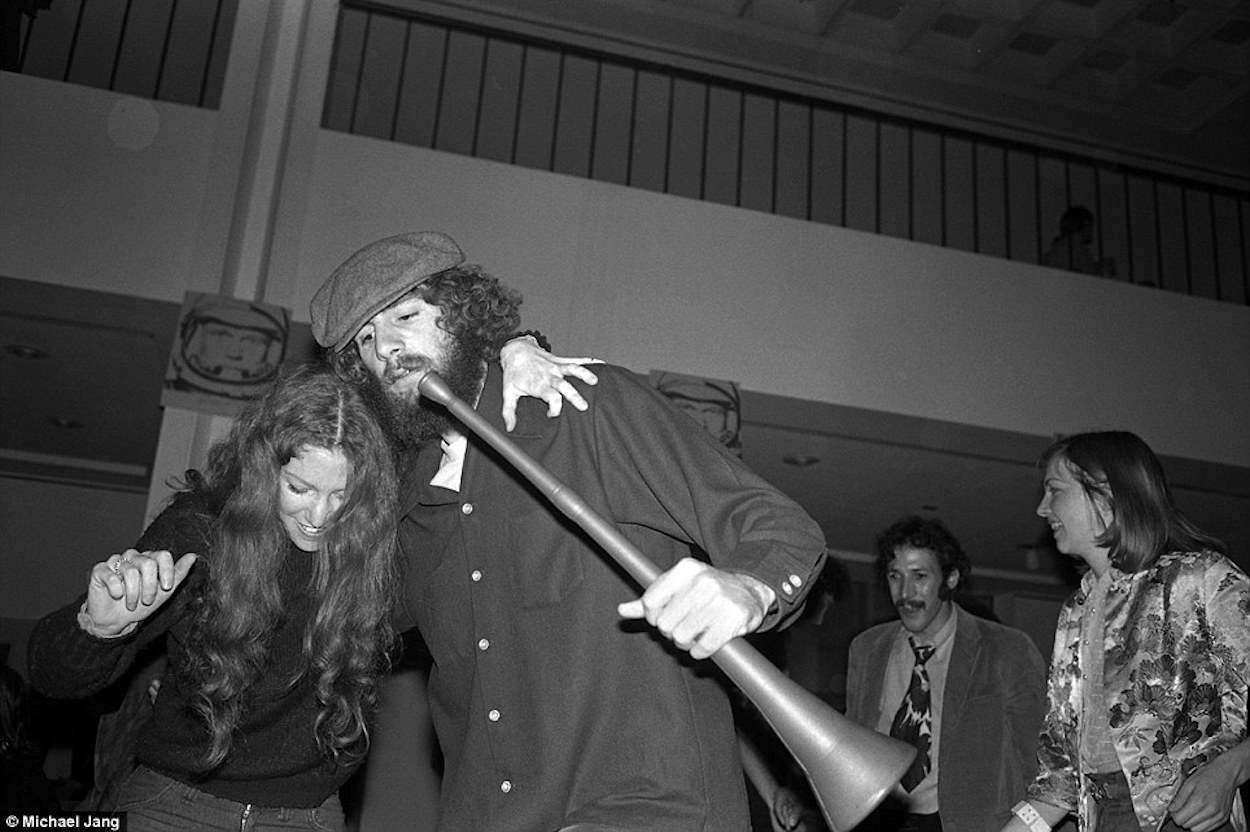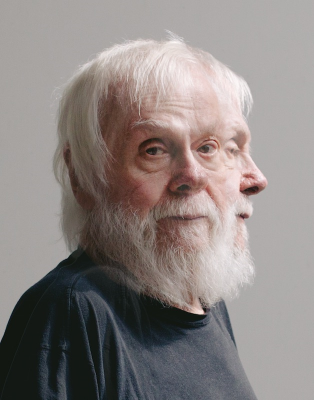John Baldessari is the artist who when asked how he’d be remembered, replied, “I’m the guy who puts dots over people’s faces.”
Too simple, of course. His legacy endures not least of all in those he taught and partied with in San Diego, at the California Institute of the Arts (CalArts) and the University of California at Los Angeles.
On July 24 1970, he embarked on The Cremation Project, in which he drove his paintings produced between 1953 and 1966 to a mortuary in San Diego and burned the lot to dust.
In 1971, when the Nova Scotia College of Art and Design invited him to present his work to students, Baldessari replied with a line that should be written over and over, as one might write a school punishment. Only, Baldessari’s line would became mantra: “I will not make any more bad art.”
He wrote:
The piece is this, from floor to ceiling should be written by one or more people, one sentence under another, the following statement: I will not make any more bad art. At least one column of the sentence should be done floor to ceiling before the exhibit opens and the writing of the sentence should continue everyday, if possible, for the length of the exhibit. I would appreciate it if you could tell me how many times the sentence has been written after the exhibit closes. It should be hand written, clearly written with correct spelling….
Now we see John Baldessari’s list of “assignments” for his CalArts class, 1970. The original course was titled Cal Arts Post Studio Art: Class Assignments (optional), 1970.
Assignment #1
Make up an art game. Structure a set of rules with which to play. A physical game is not necessary; more important are the rules and their structure. Do we in life operate by rules? Does all art? Or art rules, like tenant rules or art violations.
Assignment #2
How can plants be used in art. Problem becomes how can we really get people to look freshly at plants as if they’ve never noticed them before. A few possibilities: 1. Arrange them alphabetically like books on a shelf; 2. Plant them like popsicle trees (as in child art) perpendicular to line of hill; 3. Include object among plants that is camouflaged 4. Color palm tree pink; 5. Photo found growing arrangements; 6. Or a movie on How to Plant a Plant.
Assignment #3
Pay homage to a movie star, rock musician, etc. in form of a pilgrimage visit. Photograph is required of the two of you with a personalized signed greeting by the culture hero. Or it could be to a famous person’s grave. In this case a photo of you at the grave. Person’s name on the gravestone should be visible. No signature necessary.
Assignment #4
Defenestrate objects. Photo them in mid-air.
Assignment #5
One person copies or makes-up random captions. Another person takes photos. Match photos to captions.
Assignment #6
Disguise an object to look like another object.
Assignment #7
Make up list of distractions that often occur to you. Recreate on video tape.
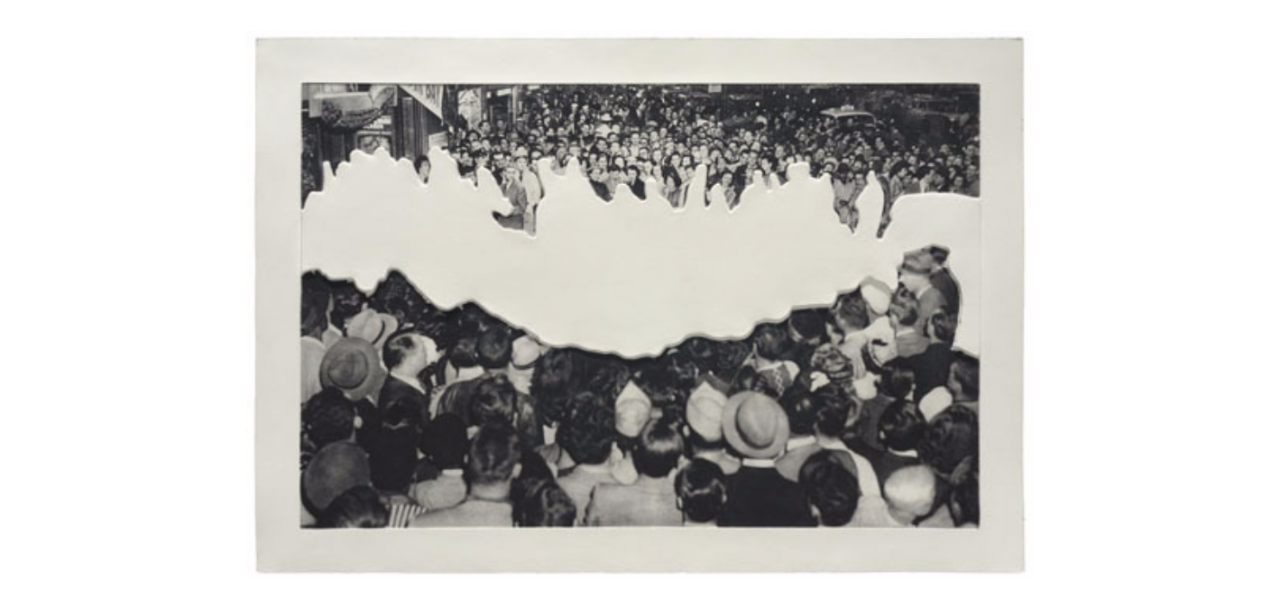
Crowds with Shape of Reason Missing: Example 2, 2012. Via
Assignment #8
Document change, decay, metamorphosis, changes occurring in time. Photograph same thing at various times during the day.
Assignment #9
By using movie camera to follow actions and by your observations into cassette recorder, document the movements of someone secretly for an entire day. Or have someone follow you.
Assignment #10
Photograph backs of things, underneaths of things, extreme foreshortenings, uncharacteristic views. Or trace them.
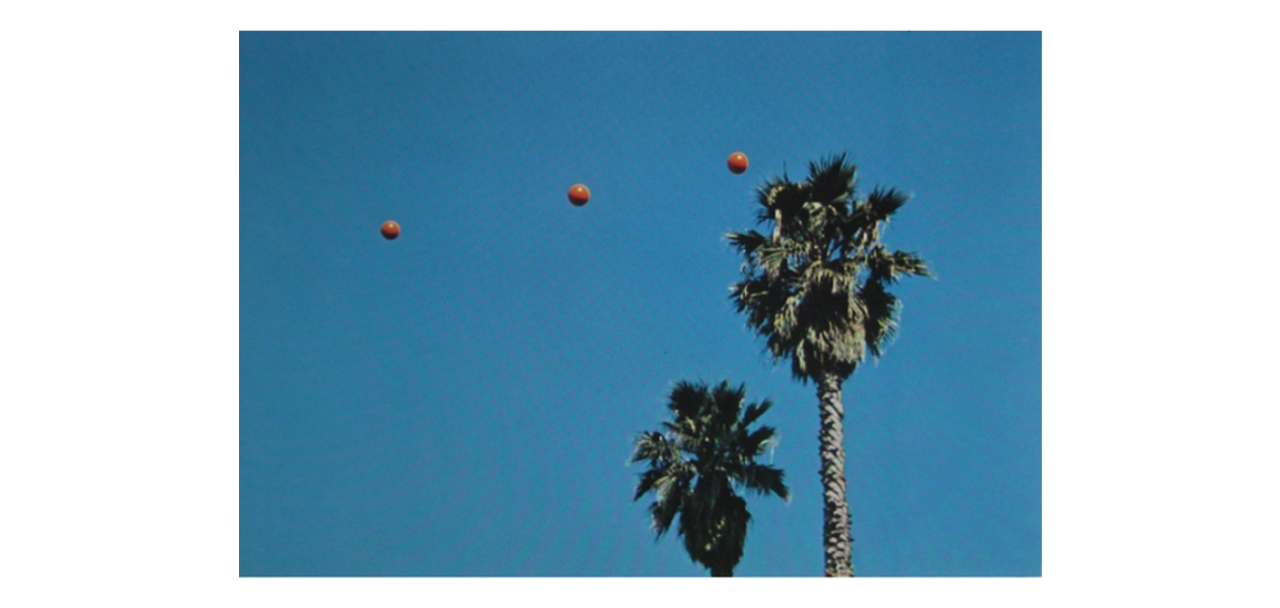
Throwing Three Balls in the Air (Best of 36 Attempts), 1973. Via
Assignment #11
Describe the visual verbally and the verbal visually.
Assignment #12
Scenarios. Do a movie from an existing, stock scenario. Or 1 person write scenario, another shoot movie. Or GRABAG scenario—everyone write 2-3 scenes, drop in box, someone pull out maybe 10 and they are shot in the order drawn out. Or everyone do their version of the grabag scenario.
Assignment #13
Repaired or patched art. Recycled. Find something broken and discarded. Perhaps in a thrift store. Mend it.
Assignment #14
Photograph of umbrella and sewing machine on an operating table. That’s Surrealism isn’t it?
Here’s John talking about his time teaching at CalArts, including recollecting “a class on joint-rolling”. Via.
CHRISTOPHER KNIGHT: Can you describe the program at CalArts? Because it was relatively raw then.
JOHN BALDESSARI: Yeah. Well, it’s easy to go back now and try to sort out the chaos, but at the time it seemed totally chaotic.
CK: Where was it in 1970?
JB: In Burbank. It was the Catholic girl’s school. Villa Cabrini.
…
JB: …Another thing, rather, that was very hard for me to come to grips with is that coming from teaching situations that evaluated students with grades, all of a sudden you’re in a situation where there are no grades. And it was always sort of a given, and you realize how much classes depend on grades as sort of like a punishment, you know….
.And so…there was no curriculum. One didn’t assign, let’s say, class problems or what have you, and there was no reason for a student to stay in your class if he or she didn’t want to. Well, I mean, we know now. All of a sudden, a few contracts weren’t renewed because nobody would go to the teachers’ classes. “Well, I think the person’s boring,” or “Too much of an autocrat,” or for whatever reasons, right, you know. And so that was unusual. And then there was a lot of money around that first year. Every class got pin money of fifteen hundred dollars.
…
The school was supposed to be cross-disciplinary, but the architecture just really inhibits that, because it’s all corridors and doors and so on. Inasmuch as it was encouraged, I don’t think it was ever that successful. I think it’s a little scary for students to try to collapse into another school. Although there seemed to be trade-offs going on. If a student wanted to learn something in the film school, he would hang out over there—or she—and begin to trade things. The student might do some sets, whatever, and the trade-off would be that you would get to use a camera and crew or something like that. Another good thing was that the place was open around the clock, so you didn’t have to turn on creativity at eight o’clock in the morning and stop at five. We were very relaxed about living in the studio and sort of winked at it, so students that had very little money could just live and work in the same space. We had studio space for everyone, and every graduate student had a scholarship pretty much.
CK: About how many art students were in it?
JB: I think roughly about, oh, maybe a hundred to a hundred and thirty were tops. Of those maybe 30, 35 would be graduate students. There was no curriculum, as I had mentioned, and I even suggested—and we tried it for one year—that students could propose any course that they thought would be necessary, and we would find an instructor for it. That met with moderate success, and I guess students were still authoritatively bound. [laughs] Feeling that adults knew best. And we had some unusual courses. I think one of the most bizarre ones that comes to mind was a course on joint rolling.
CK: Joint rolling?
JB: Yeah, we actually had it listed. And we had another one taught by a sociologist who was on the critical studies faculty, and that class was in session anytime that he encountered a student on campus. So in other words, no fixed time. Rather Socratic. [laughs]
More at John Baldessari’s site.
Would you like to support Flashbak?
Please consider making a donation to our site. We don't want to rely on ads to bring you the best of visual culture. You can also support us by signing up to our Mailing List. And you can also follow us on Facebook, Instagram and Twitter. For great art and culture delivered to your door, visit our shop.
